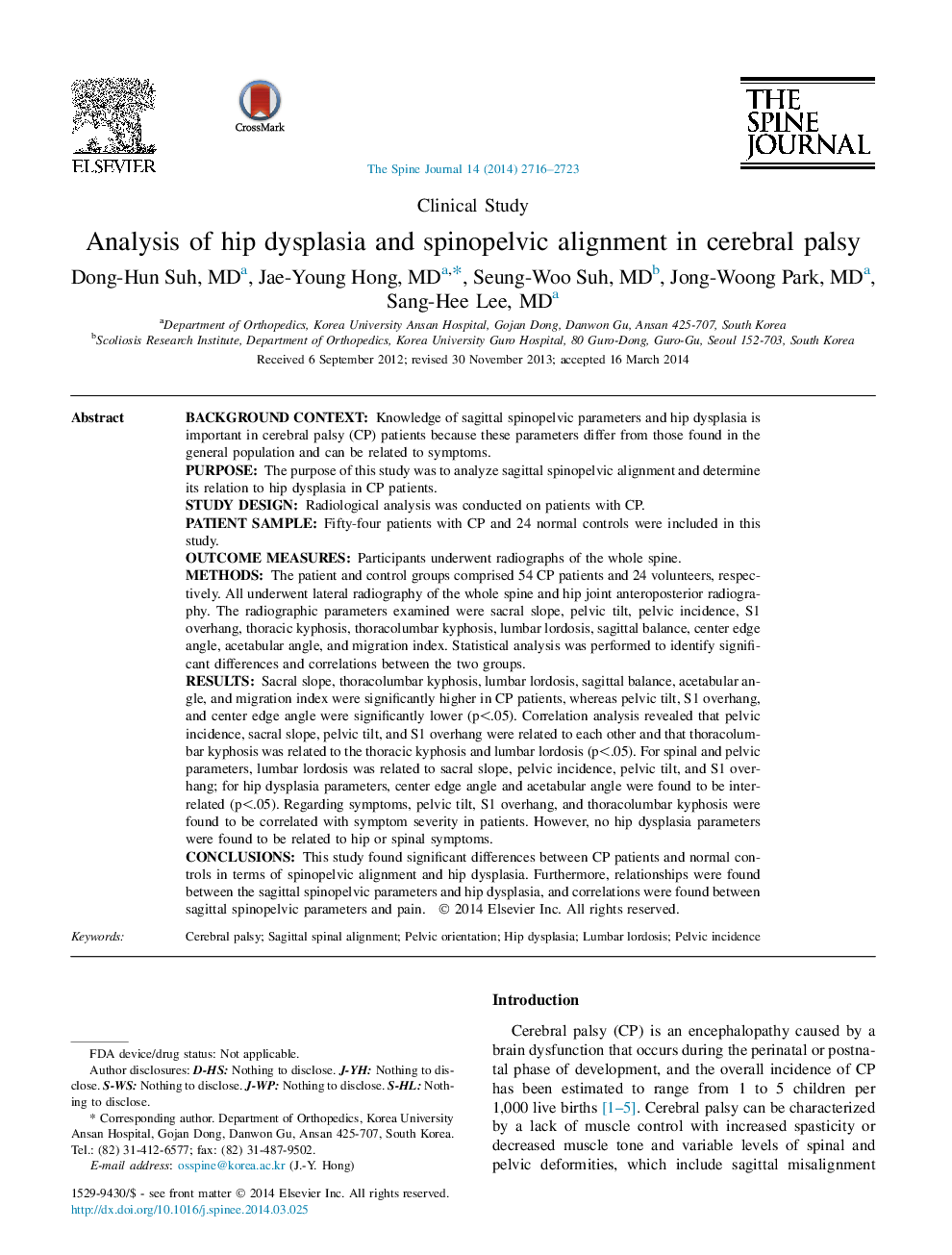| کد مقاله | کد نشریه | سال انتشار | مقاله انگلیسی | نسخه تمام متن |
|---|---|---|---|---|
| 6212731 | 1268588 | 2014 | 8 صفحه PDF | دانلود رایگان |
Background contextKnowledge of sagittal spinopelvic parameters and hip dysplasia is important in cerebral palsy (CP) patients because these parameters differ from those found in the general population and can be related to symptoms.PurposeThe purpose of this study was to analyze sagittal spinopelvic alignment and determine its relation to hip dysplasia in CP patients.Study designRadiological analysis was conducted on patients with CP.Patient sampleFifty-four patients with CP and 24 normal controls were included in this study.Outcome measuresParticipants underwent radiographs of the whole spine.MethodsThe patient and control groups comprised 54 CP patients and 24 volunteers, respectively. All underwent lateral radiography of the whole spine and hip joint anteroposterior radiography. The radiographic parameters examined were sacral slope, pelvic tilt, pelvic incidence, S1 overhang, thoracic kyphosis, thoracolumbar kyphosis, lumbar lordosis, sagittal balance, center edge angle, acetabular angle, and migration index. Statistical analysis was performed to identify significant differences and correlations between the two groups.ResultsSacral slope, thoracolumbar kyphosis, lumbar lordosis, sagittal balance, acetabular angle, and migration index were significantly higher in CP patients, whereas pelvic tilt, S1 overhang, and center edge angle were significantly lower (p<.05). Correlation analysis revealed that pelvic incidence, sacral slope, pelvic tilt, and S1 overhang were related to each other and that thoracolumbar kyphosis was related to the thoracic kyphosis and lumbar lordosis (p<.05). For spinal and pelvic parameters, lumbar lordosis was related to sacral slope, pelvic incidence, pelvic tilt, and S1 overhang; for hip dysplasia parameters, center edge angle and acetabular angle were found to be interrelated (p<.05). Regarding symptoms, pelvic tilt, S1 overhang, and thoracolumbar kyphosis were found to be correlated with symptom severity in patients. However, no hip dysplasia parameters were found to be related to hip or spinal symptoms.ConclusionsThis study found significant differences between CP patients and normal controls in terms of spinopelvic alignment and hip dysplasia. Furthermore, relationships were found between the sagittal spinopelvic parameters and hip dysplasia, and correlations were found between sagittal spinopelvic parameters and pain.
Journal: The Spine Journal - Volume 14, Issue 11, 1 November 2014, Pages 2716-2723
